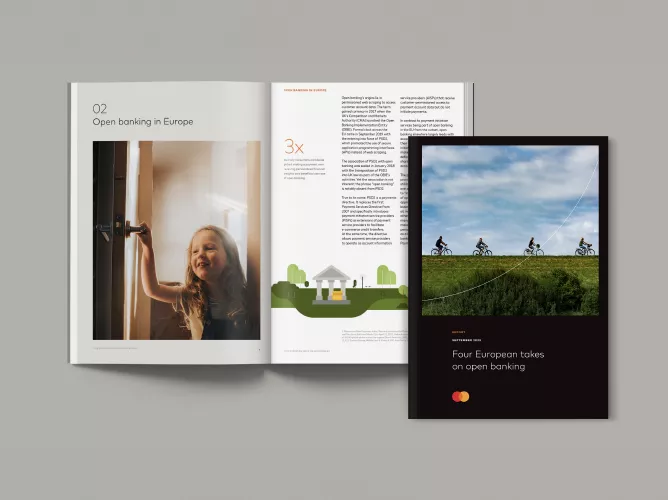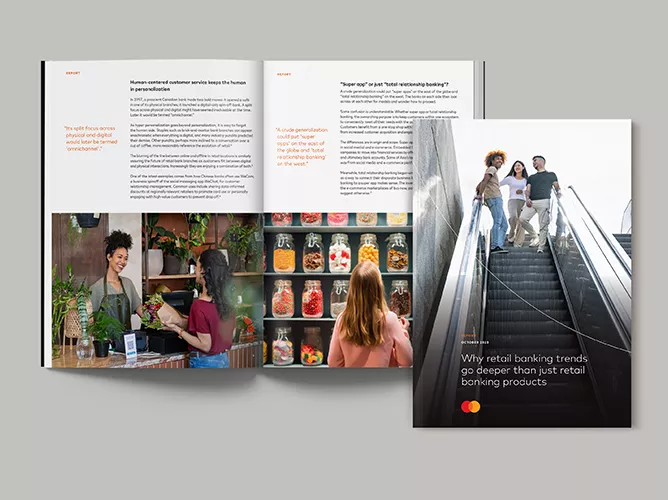September 28, 2023
Introduction
Generic, one-size-fits-all loyalty tactics fail to attract consumers and are costly for brands. Retaining loyal consumers is critical to your business, as attracting new ones becomes increasingly difficult.
Navigating how to create loyal consumers is tricky. There’s your brand definition, and then there’s thinking about it in terms of what is working for your competitors. So where do you start? What do you need? What can you do without? Why do you need a loyalty program? Amidst all the buzzwords and claims, how do you understand the value of loyalty as it applies to your business and how can it drive incremental spend? In this guide, we’ll take a closer look at strategies and best practices you should consider before rebooting your brand’s loyalty program.
Loyalty basics
Historically, loyalty programs provided a way for brands to reach consumers and reward them for purchases. Old-school loyalty programs were built with the sole objective of reducing consumer churn and blindly rewarding “loyalty.” Today, loyalty programs need to go beyond point-based, purchase-based, transactional programs to deliver the types of frictionless, relevant and valuable experiences consumers crave. But for organizations who have multiple consumer touchpoints and channels, operational silos can create a disjointed and confusing consumer experience and cause churn.
Loyalty programs need to be redefined to deliver finely tuned, personalized loyalty experiences to each individual consumer at the optimal time, through the optimal channel. One of the most valuable reasons to establish a loyalty program is to get to know your consumers better, and subsequently, engage them in a more personalized way based on what you’ve learned. To do this, brands need to motivate consumers to lean in and identify themselves.

Many loyalty programs rely too heavily on transactional benefits. While these are an important ingredient in a healthy loyalty program design, they do little more than drive short-term changes in consumer behavior.
For your loyalty program to drive long-term changes and make financial sense for your business, brands must also tap into benefits that go beyond just the surface.
The loyalty program is just the beginning
Successful loyalty programs are implemented as a means to an end as opposed to an end in and of themselves. Organizations offer programs to bring in consumers the same way a bar advertises happy hour specials on the sidewalk. But it's when a bartender upsells you with a small plate that pairs well with your choices or recommends a new drink you might like that the relationship goes beyond a surface interaction. At that point the bar and customer make a more meaningful connection with a more personalized kind of loyalty.
An old-school approach to loyalty often fails to deliver any incremental lift in consumer behavior, instead rewarding consumers for something they would likely have done anyway. According to a Forrester report, loyalty programs need to improve their emotional impact with just 54% of respondents saying that loyalty programs make them feel more connected to a brand.1
Methods that drive incremental sales are only limited by imagination and technology. So why don’t more organizations embrace these essential tactics?
The first answer can often be found at the top — the loyalty philosophy of management. Loyalty is the outcome of knowing who your consumers are across channels, meeting and anticipating their needs and recognizing them for their attention and spend as individuals. Simply offering points and tiers is rarely enough to deliver meaningful success over time; winning organizations know that personalized loyalty programs encourage engagement and inform more meaningful marketing to build more profitable relationships.
Don’t sleep on external market factors
It’s not enough to build a loyalty program that only considers your business in a vacuum. To truly stand out, companies should learn from best-in-class players and look for opportunities to go above and beyond.
Consumers will always compare the value of loyalty programs they participate in to determine which programs comprehensively meet their needs, so program offerings should evolve as competitors innovate on their propositions. Brands should seek and develop a deep understanding of not only loyalty in their industry, but also in the broader market to make sure their program feels “fresh” and relevant over time.
Active management leads to active membership
A sound loyalty philosophy sets the stage for active program management. Loyalty design is a thorough and multifaceted process. While the temptation after implementation might be to “set it and forget it,” programs that excel are those that institute and maintain a test and learn mentality from the outset. Proper personalized loyalty requires constant planning, monitoring and reconfiguring. When well-executed, these elements can yield tremendous results. Micro-segmentation can lead to a consumer feeling like their interests and needs are anticipated and satisfied by a brand, while data-driven product recommendations can lead to category cross-sell that grows wallet share and encourages customer referrals by brand advocates. A skilled team dedicated to these initiatives can turn a basic loyalty program into a formidable engine of brand relevance and profitability.
Good results begin with good tools
Program philosophy and management mean little if the organization lacks loyalty technology to make their vision a reality at scale. Not all loyalty technology is created equal. While many marketing platforms offer the ability to issue points and transactions and to segment members into tiers and issue basic rewards, this is only the start of what’s needed to develop deeper, lasting consumer relationships. More advanced platforms “listen” to every point of consumer interaction: Point of sale, e-commerce, social media, data management platform, customer service, etc.
When used properly, AI and machine learning techniques can help to generate useful insights that make loyalty offerings more engaging and compelling.
In many cases, privacy laws may require that consumers be given access to and control over their data, including the ability to opt-in or opt-out of certain data practices. Consumers will engage with greater confidence when personalized loyalty programs are transparent about their privacy practices and give consumers control over their data.
Deliver best-in-class rewards at minimal cost
Anyone can build what a consumer would consider to be the best loyalty program – everything is free! However, the loyalty design process needs to be diligent, organic and thoughtful to make sure that benefits maximize the perceived value of the loyalty program while managing the total enterprise cost.
Consumer needs are broad. A straightforward and generic reward for a purchase may bring excitement, but that feeling would be as fleeting as the transaction itself. Leading brands stand out and save money by providing impactful rewards which address the emotional needs of the consumer. Something as simple as a “congratulations” email can show recognition and influence how a consumer feels, engaging at minimal cost to your brand.
You launched a loyalty program…now what?
Train your staff to champion your loyalty program
The percentage of transactions that are tied to specific loyalty members varies, but is often much lower than most companies desire. With goals to identify and draw meaningful conclusions from every transaction, no stone can be left unturned. A variety of factors can impact the effectiveness of your program:
Are the benefits clear?
Do you provide enough incentive for the consumer to change behavior?
Are you communicating and reminding consumers about the program enough? Or perhaps too much?
Is your content, gamification, and messaging both engaging and interesting?
Another key consideration to address is your consumer-facing staff. The associates, servers and other consumer-facing staff are on the front lines to champion and accelerate your loyalty program. They are a critical interaction with your consumer. Your staff should be asking consumers if they are part of the loyalty program, explaining the program benefits and inviting consumers to sign up. This may be the reminder that the client needs.
Although it sounds easy, it’s often not happening. One reason is that in many organizations, the way that associates are measured is not tied to loyalty attachment. Staff are going to do what they are measured on, so if you want them to get as many transactions attached to a loyalty profile as possible, then you need to start measuring them on that metric.
And even if the business is entirely digital, enrollment and engagement in a personalized loyalty program can still be highly encouraged. Whether it be through timed offers, pop-ups, or chatbots, if the program and its benefits are spotlighted, it will draw consumer attention.
It may be something new in your reporting and analytics, but there is a huge opportunity to drastically increase your loyalty attachment rate. Here are a few steps to make this happen:
Step 1
Start measuring loyalty attachment rates by associate. This is simply the percentage of your transactions that have a loyalty account attached to them. Then break this down by associate.
Step 2
Communicate to your staff that this is important to the company. Make sure they are clear on how to do this and demonstrate it.
Step 3
Make it a game. Show a leaderboard in the breakroom. Give prizes each month to the associate with the highest loyalty attachment rate. This can even be automated through advanced loyalty platforms.
Getting as many transactions attached to known users as possible is critical to delivering effective personalized loyalty marketing. Incentivizing your front-line staff can be a powerful tool to help you achieve this and change your program.
To move the needle on these key indicators, you need to understand and activate the data at hand in real-time. Sending a “We Miss You” note to someone who was in the store yesterday is a bad look and antithetical to increasing RFM (recency, frequency, monetary value). A modern consumer data management capability helps marketers increase consumer loyalty (which is essentially a roll-up of RFM) by taking actions based on predicted consumer behavior/value based on purchase history and other latent factors that influence affinity, motivation and intent to purchase.
Through this analysis, marketers can calculate backwards-looking scores such as RFM spend for multiple activity types. At the same time, they will be able to calculate forward-looking metrics such as probability of churn and customer lifetime value. A robust product recommendation engine can then act on those metrics, using historical purchase behavior to predict the probability of “liking” a specific product or group of products. Next best product offerings are ranked by probabilities from highest to lowest. Where applicable, marketers can add “weights” to the results to ensure a single outcome is raised or lowered in the ranking. This is useful for promoting new products, where there is not enough history to provide strong probabilities for individual user/product pairings.
Prevent backlash from loyalty program changes
Before diving into the subject of backlash prevention and mitigation, it’s important to spend a moment addressing the question — why make changes to your loyalty program? You already have a loyalty program to motivate consumers to shop with your brand instead of a competitor’s, to spend more with your brand, and to spend with your brand more often. Yes, there is a desire for the program to build goodwill with consumers, but it must make financial sense for the business. Brands sometimes have to make changes to their loyalty program in order to fix poor design or financial modeling.
Consumers sign up for loyalty programs to receive rewards and cost savings for shopping. With most loyalty programs offering some type of incentive after a certain amount of money is spent, consumers have understandably come to feel entitled to those perks. According to a 2023 Forrester Consulting study commissioned by Mastercard, 40% of consumers reported that special loyalty perks specifically for the [establishment] would encourage them to interact again in the future, but over 70% of respondents feel that their loyalty programs are lacking. Therefore, taking something away from consumers is never received well, but ironically, it can be necessary to reset the program to make it better for both consumers and the business.
Source: "Improve Point of Order Engagements By Serving Your Consumers Digitally" Forrester, 2023.
Source: "Improve Point of Order Engagements By Serving Your Consumers Digitally" Forrester, 2023.
If you’re making any type of change to your loyalty program, you can anticipate that at least some portion of your consumers is not going to be happy about it. Here are a few measures brands should take to prevent or minimize backlash from loyalty program changes:
Communication tactics
Communicate to members before, during and after. Detail the milestones.
Explain why the program is changing. Communicate user benefits while being transparent about how the brand benefits.
Give your customer service team scripts. Make sure they learn them and are comfortable with them prior to launch.
FAQs should be drafted and proactively pushed to members via e-mail, web etc., and not buried in the Terms & Conditions.
Explain to internal employees and vendors with consistent messaging. Help them understand that there will be negative feedback and the reasons for the program change.
Be transparent with your members.
Give your loyal members something extra for staying.
Train your team
Leading up to the change, train the teams on the new program.
If they understand how the point economy works and the benefits to the member, they will be more confident in answering questions and responding to feedback.
Provide them with FAQs & documentation on the change.
Role play leading up to the launch.
Test & learn
Based on engagement activity, tweak points as needed (while always keeping an eye on ROI).
Ask members for feedback.
Keep engagement and earning opportunities fresh. Optimize based on performance.
Roll out new perks and rewards every 6-8 weeks. Bring back popular ones.
Change can be hard, especially for consumers. But sometimes making changes to your brand’s loyalty program is a necessary measure that must be taken to ensure it makes financial sense and effectively drives business outcomes like increased purchase frequency, recency and basket size. There are many factors to consider when redesigning a next-generation loyalty program for your business. To make this task easier, seek out recognized loyalty experts to help guide you through the loyalty design process.
Request a demo to learn more.
















